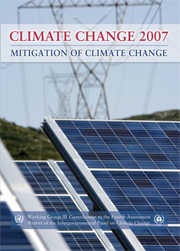 Climate Change 2007 - Mitigation of Climate Change
Climate Change 2007 - Mitigation of Climate Change Book contents
- Frontmatter
- Contents
- Foreword
- Preface
- Summary for Policymakers
- Technical Summary
- 1 Introduction
- 2 Framing issues
- 3 Issues related to mitigation in the long term context
- 4 Energy supply
- 5 Transport and its infrastructure
- 6 Residential and commercial buildings
- 7 Industry
- 8 Agriculture
- 9 Forestry
- 10 Waste management
- 11 Mitigation from a cross sectoral perspective
- 12 Sustainable Development and mitigation
- 13 Policies, instruments and co-operative agreements
- Annex I Glossary
- Annex II Acronyms, abbreviations and chemical compounds
- Annex III List of contributors
- Annex IV List of reviewers
- Index
8 - Agriculture
- Frontmatter
- Contents
- Foreword
- Preface
- Summary for Policymakers
- Technical Summary
- 1 Introduction
- 2 Framing issues
- 3 Issues related to mitigation in the long term context
- 4 Energy supply
- 5 Transport and its infrastructure
- 6 Residential and commercial buildings
- 7 Industry
- 8 Agriculture
- 9 Forestry
- 10 Waste management
- 11 Mitigation from a cross sectoral perspective
- 12 Sustainable Development and mitigation
- 13 Policies, instruments and co-operative agreements
- Annex I Glossary
- Annex II Acronyms, abbreviations and chemical compounds
- Annex III List of contributors
- Annex IV List of reviewers
- Index
Summary
EXECUTIVE SUMMARY
Agricultural lands (lands used for agricultural production, consisting of cropland, managed grassland and permanent crops including agro-forestry and bio-energy crops) occupy about 40-50% of the Earth's land surface.
Agriculture accounted for an estimated emission of 5.1 to 6.1 GtCO2-eq/yr in 2005 (10-12% of total global anthropogenic emissions of greenhouse gases (GHGs)). CH4 contributes 3.3 GtCO2-eq/yr and N2O 2.8 GtCO2-eq/yr. Of global anthropogenic emissions in 2005, agriculture accounts for about 60% of N2O and about 50% of CH4 (medium agreement, medium evidence). Despite large annual exchanges of CO2 between the atmosphere and agricultural lands, the net flux is estimated to be approximately balanced, with CO2 emissions around 0.04 GtCO2/yr only (emissions from electricity and fuel use are covered in the buildings and transport sector, respectively) (low agreement, limited evidence).
Globally, agricultural CH4 and N2O emissions have increased by nearly 17% from 1990 to 2005, an average annual emission increase of about 60 MtCO2-eq/yr. During that period, the five regions composed of Non-Annex I countries showed a 32% increase, and were, by 2005, responsible for about threequarters of total agricultural emissions. The other five regions, mostly Annex I countries, collectively showed a decrease of 12% in the emissions of these gases (high agreement, much evidence).
A variety of options exists for mitigation of GHG emissions in agriculture. The most prominent options are improved crop and grazing land management (e.g., improved agronomic practices, nutrient use, tillage, and residue management), restoration of organic soils that are drained for crop production and restoration of degraded lands.
- Type
- Chapter
- Information
- Climate Change 2007 - Mitigation of Climate ChangeWorking Group III contribution to the Fourth Assessment Report of the IPCC, pp. 497 - 540Publisher: Cambridge University PressPrint publication year: 2007
- 10
- Cited by
